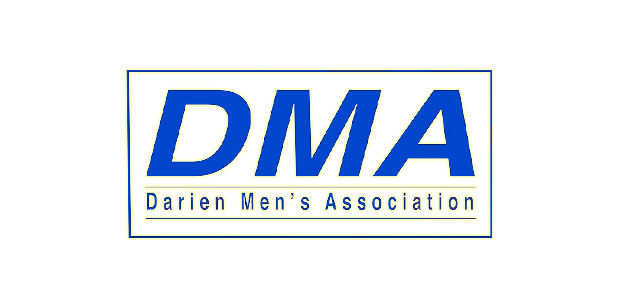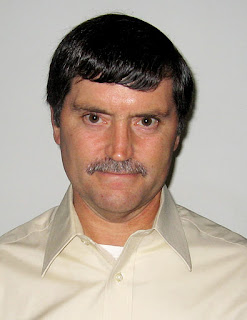 Martin Yellin will talk about Project Hexagon; how it built huge mechanical spy satellites, and how it was top secret for 45 years.
Martin Yellin will talk about Project Hexagon; how it built huge mechanical spy satellites, and how it was top secret for 45 years.
Starting in 1965, he helped design key elements of Hexagon — a reconnaissance spacecraft that, one NASA official says, “helped prevent World War III.” For over 4 1/2 decades, he was forbidden to talk about any aspect of his work. That’s when — 25 years after the top-secret, Cold War-era mission ended — Hexagon, and 2 other satellite programs were finally declassified. Many of the real heroes of the program had died. He recalled the very first briefing on Hexagon after Perkin-Elmer was awarded the top-secret contract in 1966. Looking around the room at his 30 or so colleagues, he thought, “How on Earth is this going to be possible?” Marty thought they were crazy. “They envisaged a satellite that was 60-foot long and 30,000 pounds and supplying film at speeds of 200 inches per second. The precision and complexity blew his mind.”
It was dubbed “Big Bird” and it was considered the most successful space spy satellite program of the Cold War era. From 1971 to 1986 a total of 20 satellites were launched, each containing 60 miles of film, and sophisticated cameras that orbited the earth snapping vast, panoramic photographs of the Soviet Union, China, and other potential foes.
“Each 6-inch-wide frame of Hexagon film captured a wide swath of terrain covering 370 nautical miles — the distance from Cincinnati to Washington — on each pass over the former Soviet Union and China. The satellites had a resolution of about 2 to 3 feet (0.6 to nearly 1 meter).” Hexagon, took close-range pictures of Soviet missiles, submarine pens and air bases, even entire battalions on war exercises. At the height of the Cold War, the ability to receive this kind of technical intelligence was incredible. We needed to know what they were doing and where they were doing it, and in particular if they were preparing to invade Western Europe. Hexagon created a tremendous amount of stability because it meant American decision makers were not operating in the dark.
Among other successes, Hexagon is credited with providing crucial information for the Strategic Arms Limitation Talks between the United States and the Soviet Union in the 1970s.
Hexagon averaged 124 days in space, but as the satellites became more sophisticated, later missions lasted twice as long. The 60-foot long, 30,000-pound Hexagon carried 4 spools — a phenomenal 60 miles’ worth — of high-resolution photographic film on its space surveillance missions. The spools weighed 3,000 pounds. The film was shot back through the earth’s atmosphere every few months in buckets that parachuted over the Pacific Ocean, where C-130 Air Force planes snagged them with grappling hooks. From there, the film was sent to an ultra-secret Kodak lab. The developed film was sent to NPIC for analysis. It was in color and in stereo and used star data to know the exact location on earth. The scale, ambition and sheer ingenuity of Hexagon KH-9 was breathtaking. The fact that 19 out of 20 launches were successful (the final mission blew up because the booster rockets failed) is astonishing.
During the design phase, engineers and scientists used hand-drawings and worked on endless technical problems using “slide-rules and notebooks”. There were no computers. The intensity would increase as launch deadlines loomed and on the days when “the customer” — the CIA and later the Air Force — came for briefings. On at least one occasion, former President George H.W. Bush, who was then CIA director, flew into Danbury for a tour of the plant. During the fabrication and test phase they wore protective white jumpsuits, and had to walk through air-shower chambers before entering the sanitized “cleanroom” where the equipment was stored.
From the outset, secrecy was a huge concern, especially in Danbury, where the intense activity of a relatively small company that had just been awarded a massive contract (the amount was not declassified) made it obvious that something big was going on. Few knew the true identity of “the customer”. They met in a smoke-filled, wood-paneled conference room where the phone lines were scrambled. When they traveled, they sometimes used false company names.
At one point in the 1970s there were more than 1,000 people in the Danbury area working on The Secret. And though they worked long hours under intense deadlines, sometimes missing family holidays and anniversaries, they could tell no one — not even their wives and children — what they did. Inside the plant, it was impossible to disguise the gigantic vacuum thermal chamber where cameras were tested in extreme conditions that simulated space. There was also a “shake, rattle and roll room” to simulate conditions during launch.
“The question became, how do you hide an elephant?” a National Reconnaissance Office report stated at the time. It decided on a simple response: “What elephant?” Employees were told to ignore any questions from the media, and never confirm the slightest detail about what they worked on.
But it was impossible to conceal the launches at Vandenberg Air Force base in California, and aviation magazines made several references to “Big Bird.” In 1975, a “60 Minutes” television piece on space reconnaissance described an “Alice in Wonderland” world, where American and Soviet intelligence officials knew of each other’s “eyes in the sky” — and other nations did, too — but no one confirmed the programs or spoke about them publicly.
“They were like the guys who worked on the first atom bomb,” “It was more than a sworn oath. They had been entrusted with the security of the country. What greater trust is there?”
Even wives — who couldn’t contact their husbands or know of their whereabouts when they were traveling — for the most part accepted the secrecy. They knew the jobs were highly classified. They knew not to ask questions.
Arranged by Bob Smith


 Unemployment is a nasty problem for all parts of American society and it is worse in Europe, especially among young people.
Unemployment is a nasty problem for all parts of American society and it is worse in Europe, especially among young people.


 Terrie Wood, State Representative for Darien and Rowayton, will speak on the current political climate and the stasis of the Connecticut legislature.
Terrie Wood, State Representative for Darien and Rowayton, will speak on the current political climate and the stasis of the Connecticut legislature. Mark Albertson is an historical research editor at Army Aviation magazine, has been a member of the United States Naval Institute for more than twenty-five years, as well as being a member of the Navy League.
Mark Albertson is an historical research editor at Army Aviation magazine, has been a member of the United States Naval Institute for more than twenty-five years, as well as being a member of the Navy League. Joseph Gianquinto is a 38 year veteran of the television industry.
Joseph Gianquinto is a 38 year veteran of the television industry. Heidi Hadsell, Ph.D., will speak on the interplay between the three Abrahamic religions: Judaism, Christianity and Islam.
Heidi Hadsell, Ph.D., will speak on the interplay between the three Abrahamic religions: Judaism, Christianity and Islam. Martin Yellin will talk about Project Hexagon; how it built huge mechanical spy satellites, and how it was top secret for 45 years.
Martin Yellin will talk about Project Hexagon; how it built huge mechanical spy satellites, and how it was top secret for 45 years.